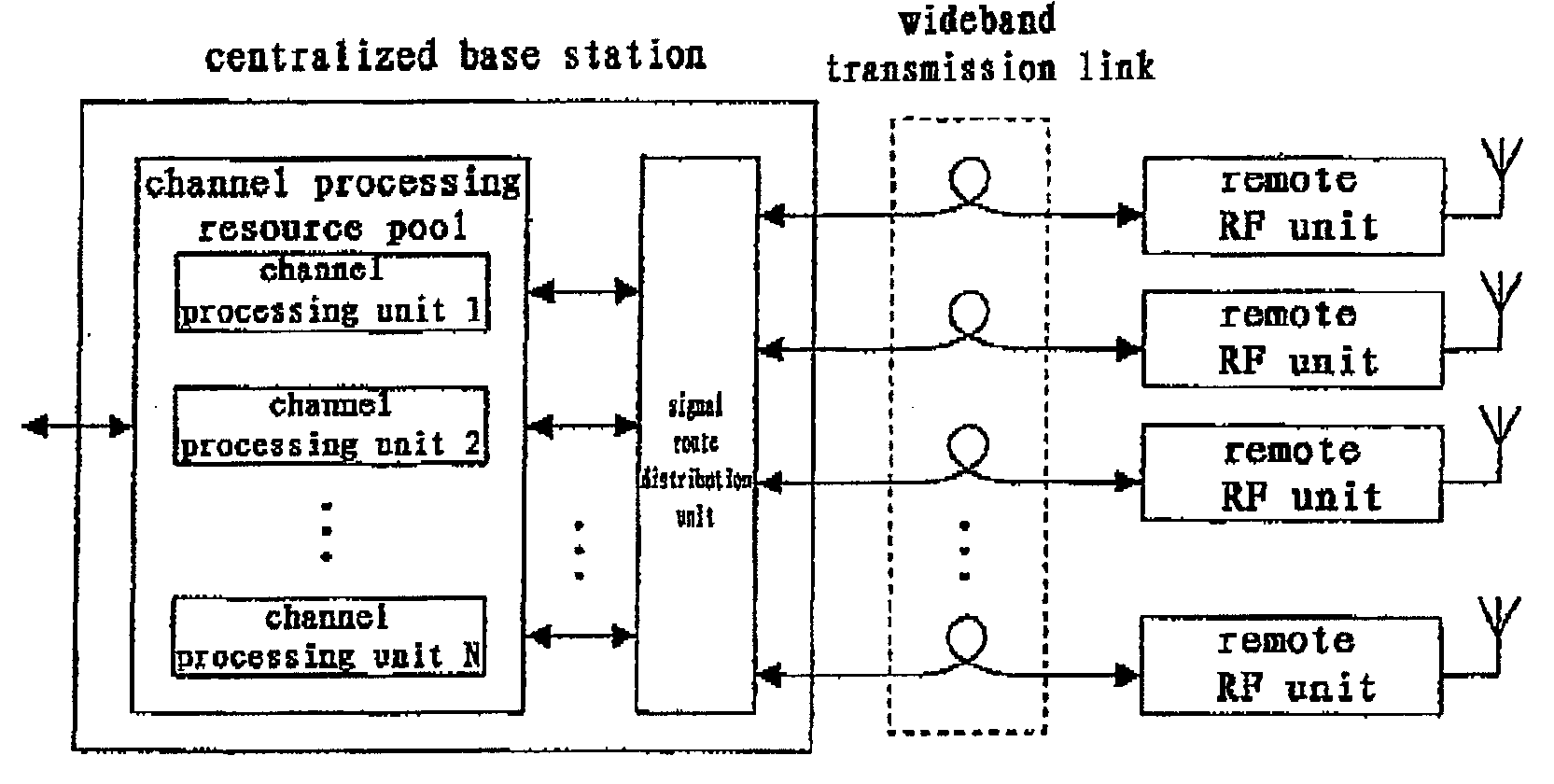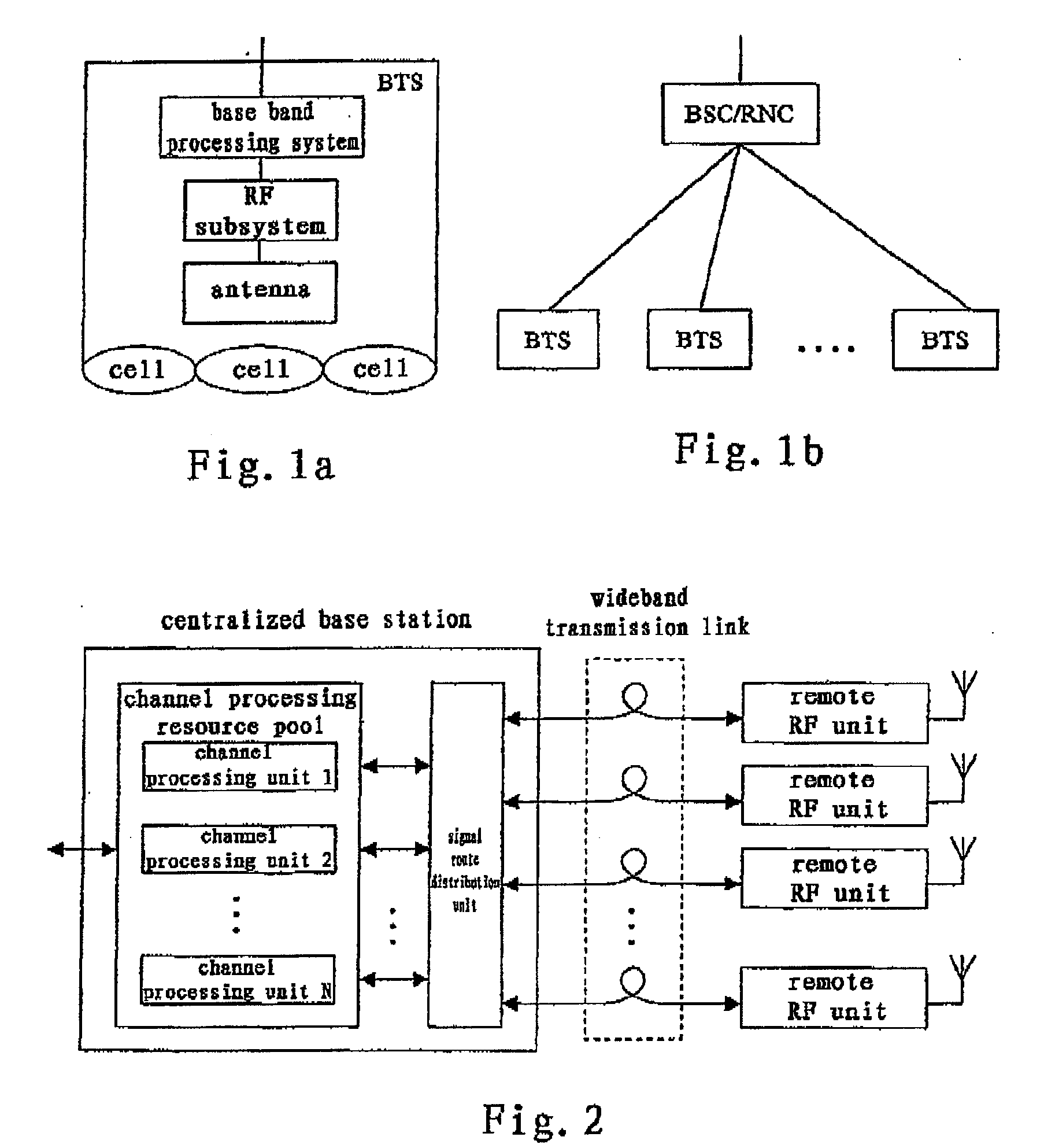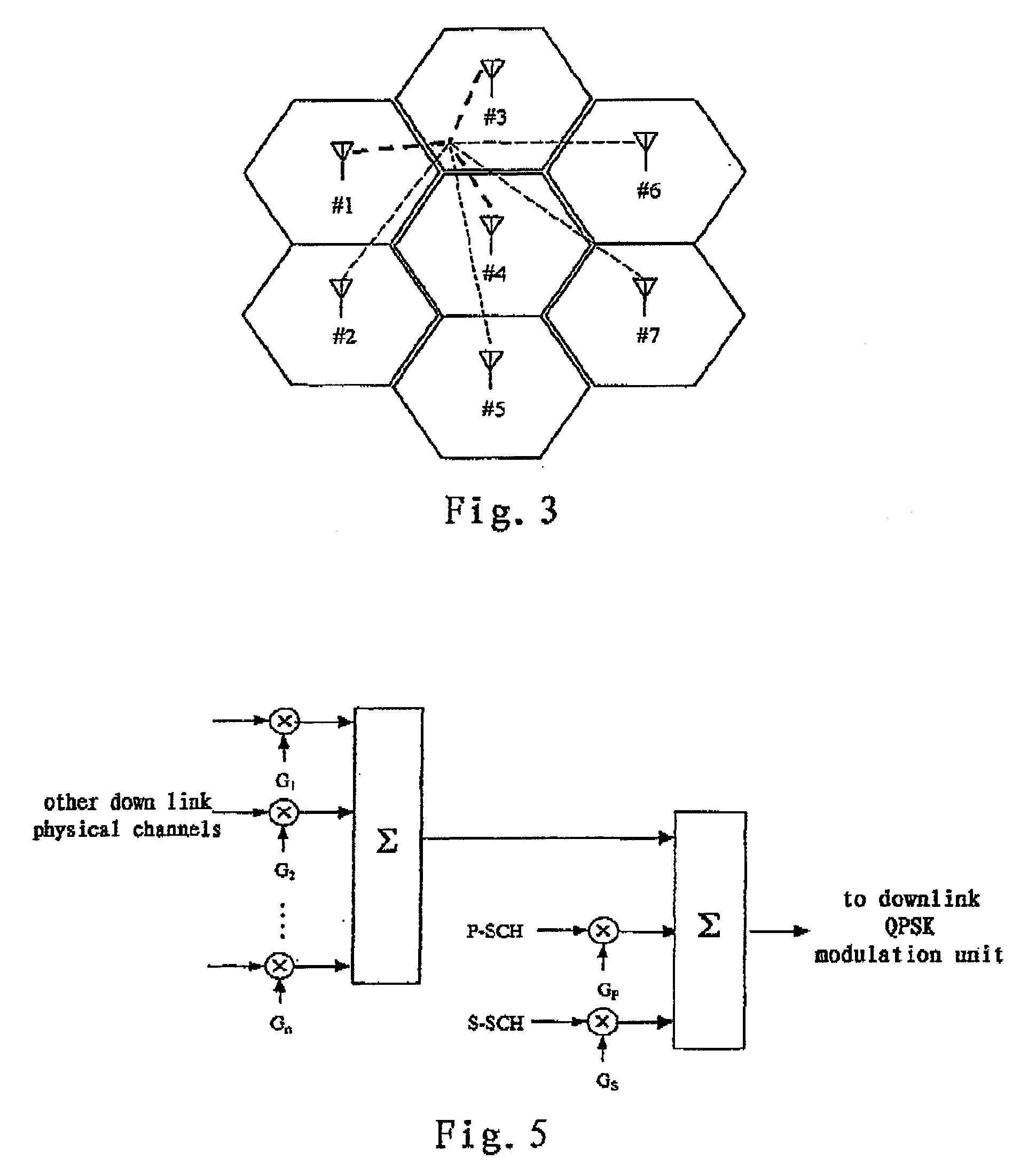Downlink Power Control Method and Apparatus in the Distributed Antenna System
a power control and antenna system technology, applied in the direction of wireless communication, power management, sustainable buildings, etc., can solve the problems of increasing the ue's power consumption, reducing the ue's standby time, and increasing the call loss of the u
- Summary
- Abstract
- Description
- Claims
- Application Information
AI Technical Summary
Benefits of technology
Problems solved by technology
Method used
Image
Examples
Embodiment Construction
[0028]An embodiment of downlink power control device according to the present invention will be described by referring to FIGS. 4 and 6. FIG. 4 and 6 show a spreading reception device, a downlink power control device and a merging unit 20. For convenience of explanation, FIG. 4 only presents the spreading reception device corresponding to one UE. As shown in FIG. 4, the downlink power control device comprises a signal quality measuring unit 12, an average signal quality calculating unit 13 and a power control unit, wherein the power control unit comprises a selecting unit 14. As shown in the figure, the uplink reception signal from each remote radio frequency unit 11 of the complex cell is delivered to the centralized base station via a wideband transmission link for baseband processing. For the uplink, the spreading reception device of the complex cell is a receiving diversity RAKE receiver 10, where correlation reception, multipath searching and tracking processing are respectivel...
PUM
 Login to View More
Login to View More Abstract
Description
Claims
Application Information
 Login to View More
Login to View More - R&D
- Intellectual Property
- Life Sciences
- Materials
- Tech Scout
- Unparalleled Data Quality
- Higher Quality Content
- 60% Fewer Hallucinations
Browse by: Latest US Patents, China's latest patents, Technical Efficacy Thesaurus, Application Domain, Technology Topic, Popular Technical Reports.
© 2025 PatSnap. All rights reserved.Legal|Privacy policy|Modern Slavery Act Transparency Statement|Sitemap|About US| Contact US: help@patsnap.com



